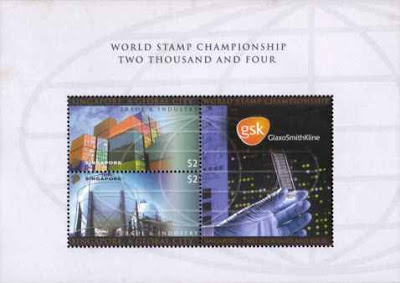
The Royal Mail issued 6 stamps featuring British medical breakthroughs on 16 September 2010. They are:
1st Class: This stamp shows the inferior anterolateral view (left side) of the heart and its major blood vessels, with a an electrocardiograph in the foreground. It commemorates heart-regulating beta-blockers synthesized by Sir James Black (1962). Beta blockers are used for various indications, but particularly for the management of cardiac arrhythmias, cardioprotection after myocardial infarction (heart attack), and hypertension. Propranolol was the first clinically useful beta adrenergic receptor antagonist. Developed by Sir James W. Black in the late 1950s, it revolutionized the medical management of angina pectoris and is considered to be one of the most important contributions to clinical medicine and pharmacology of the 20th century. Sir James Black was awarded the Nobel Prize in Medicine in 1988 for this work.
58p: The image is that of a petri dish culture of penicillium notatum now known as penicillum chrysogenum; the central circular area described by the white ring illlustrates the antibiotic properties of of the mold. The discovery of penicillin, extracted from this mold, is attributed to Scottish scientist and Nobel laureate Alexander Fleming in 1928 He showed that, if penicillium notatum was grown in the appropriate substrate, it would exude a substance with antibiotic properties, which he dubbed penicillin. This serendipitous observation began the modern era of antibiotic discovery
60p: The stamp shows a coloured X-ray of the pelvis, with hip replacement, of a woman. Sir John Charnley began his research into hip replacement in 1949 as an orthopedic surgeon in Wrightington Hospital. While suffering many setbacks during its development Charnley finally performed the first successful hip replacement operation in 1962. This subsequently became a gold standard treatment and has remained the most successful surgical and radiological procedure up to the present day.
67p: This stamp features the intraocular lens, an artificial implanted lens placed in the eye surgically. Whilst working with Royal Air Force casualties during World War II, Sir Harold Ridley noticed that when splinters of perspex from aircraft cockpit canopies became lodged in the eyes of wounded pilots, they did not trigger rejection, leading him to propose the use of artificial lenses in the eye to correct cases of cataracts. He had a lens manufactured using an identical plastic - Perspex CQ made by ICI - and on 29 November 1949 at St Thomas’ Hospital, achieved the first implant of an intraocular lens, thus pioneering artificial lens implant surgery.
88p: The stamp shows the coloured transmission electron micrograph of a section through a misshapen red blood cell infected with a malaria parasite. In 1897, Ronald Ross discovered the presence of the malarial parasite within the Anopheles mosquito, He initially called them dapple-wings and following the hypothesis of Sir Patrick Manson that the agent that causes malaria was spread by the mosquito, he was able to find the malaria parasite in a mosquito that he artificially fed on a malaria patient. Later using birds that were sick with malaria, he was able to ascertain the entire life cycle of the malarial parasite, including its presence in the mosquito’s salivary glands. He demonstrated that malaria is transmitted from infected birds to healthy ones by the bite of a mosquito, a finding that suggested the disease’s mode of transmission to humans. Today, scientists are still looking for an effective way to combat malaria.
97p: This shows a coloured computed tomography (CT) scan of an axial section through a patient’s abdomen showing a false aneurysm (red) due to chronic pancreatitis. While on an outing in the country, Hounsfield came up with the idea that one could determine what was inside a box by taking X-ray readings at all angles around the object. Hounsfield built a prototype head scanner and tested it first on a preserved human brain, then on a fresh cow brain from a butcher shop, and later on himself. In September 1971, CT scanning was introduced into medical practice with a successful scan on a cerebral cyst patient at Atkinson Morley Hospital in Wimbledon, London. And thus computed tomography scanner was invented.









